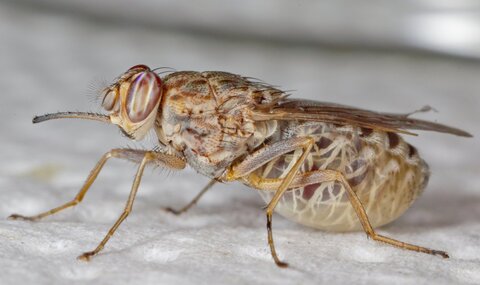If we have been controlling tsetse for so long, why are they still a problem?

This question has been the subject of several books and remains a controversial subject. However, the answer can be summarised as follows.
Geography
About 10 million square kilometres of Africa are infested with tsetse. To eliminate trypanosomiasis completely, we would need to eradicate tsetse at a rate of ~100,000 square kilometres a year for a hundred years. It was only realised that tsetse were the vectors of trypanosomiasis a hundred years ago, and we have only had large-scale control in the last fifty years. Even now, achieving this rate of control would be impossible given the logistical difficulties of working in remote areas of Africa.
There have been a few large-scale successes, with countries such as Botswana, South Africa and Zimbabwe eliminating tsetse from most of their farming areas. However, these countries are at the natural limits of tsetse distribution, and the national successes are relatively slight when assessed on a continental scale.
History
The lack of progress is also related to Africa’s turbulent history. Wars and political instability have either prevented people from controlling the disease or undone the achievements of the past.
Trypanosomiasis in Zimbabwe for example, has been largely eliminated three times in the past hundred years. About half the country (~200,000 square kilometres) was probably infested by tsetse in the 1850s. A pandemic of rinderpest at the end of the 19th century killed huge numbers of wild hosts, and, as a result, tsetse disappeared from most of the country.
Over the next 50 years, the host and fly populations recovered and trypanosomiasis returned as a major problem. Between 1950 and 1975, large-scale control operations, based on the use of ground spraying with DDT and dieldrin and the destruction of wild hosts, eliminated tsetse from most of the country for a second time.
However, the war for independence in the 1970s made it difficult to protect these gains, and yet again tsetse returned to their pre-rinderpest limits. So, for the third time, Zimbabwe pushed the tsetse belt back to the edges of the country where it currently remains. The same sort of story can be applied to most tsetse-affected countries.
Biology
The first two reasons are arguably proximate reasons for tsetse still being a problem. The ultimate reason relates to its biology. Tsetse populations are highly resilient: they can persist at very low densities, the 29 species and subspecies are widely dispersed and they are highly mobile. Thus eradicating tsetse from an area is not only exceedingly difficult but even if this is achieved, the area remains susceptible to re-infestation from neighbouring infestations.